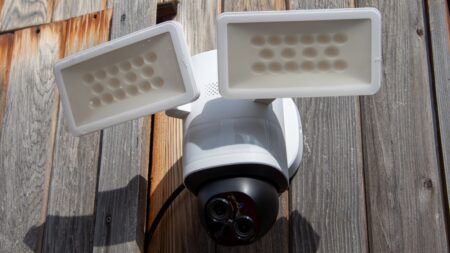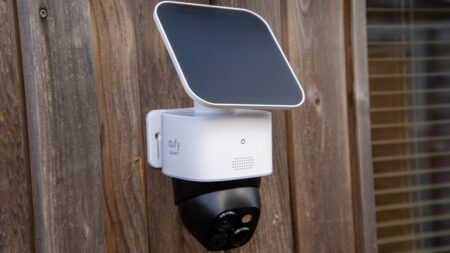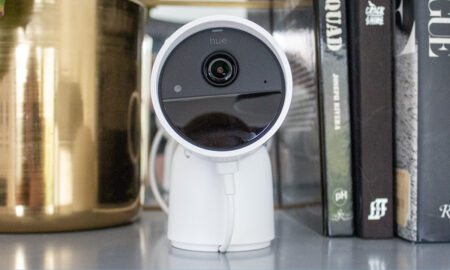Let there be 3000 lumens of light
If you’re looking for the best night-time performance, the Arlo Pro 3 Floodlight is a winner. You get the image quality of the Pro 3 with excellent lighting, zero wires and you don’t even need the base station. Seriously recommendable.
Pros
- Lights a wide area
- Wireless and no base station
- 2K video
Cons
- HDR could be better
- Arlo app still improving
- Pricey
Arlo’s range of smart security cameras has been rapidly expanding, and the Arlo Pro 3 Floodlight has arrived to light up the connected camera market.
We’re not really sure why it’s called the Arlo Pro 3 Floodlight. Crucially, it doesn’t rely on the presence of a base station that the Pro 3 range does, thus means you don’t need an existing Arlo Pro 3 (or any Arlo cameras) to jump in.
In fact, the Arlo Pro 3 Floodlight is a great starting point for those looking for a first outdoor smart home camera.
- The competition: The best smart home security cameras
It joins the new Arlo Essential Spotlight, which is the company’s new entry-level system which also doesn’t require a base station.
And the Arlo Pro 4 now, the first member of its “Pro” range also dispense with the base station. The Pro 3 Floodlight can join any of these.
But what does the Pro 3 Floodlight offer, and does it do the job? We’re here to shed some light on the matter.
Arlo Pro 3 Floodlight: Design
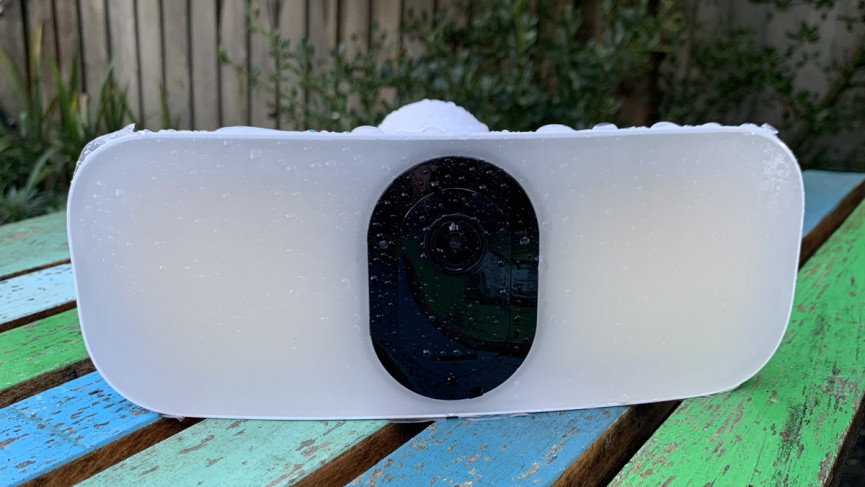
The Arlo Pro 3 Floodlight is a bonkers looking camera, the hammerhead shark of the smart security game.
In the middle is a standard Pro 3, with two protruding LED panels that beam out 3000 lumens of white light.
It’s bloody bright, and we’re pretty sure that should you look right into its beam inadvertently while setting it up, you’d be seeing stars for weeks.
True to all Arlo cameras the Pro 3 Spotlight is fully wireless, and it’s powered by a Lithium-ion, rechargeable battery, houses inside the central case.
Arlo smart security option:Arlo Ultra 2 review
This is its super-power and the ace card it holds over the likes of Nest.
Arlo quotes battery life at six months – although you can wire it in if you need using the supplied outdoor rated cable, if you plan to place it out of reach.
It also comes with a wall-mount, as you’ll likely want to elevate the Pro 3 Floodlight to make the most of its powers.
Arlo Pro 3 Floodlight: Features
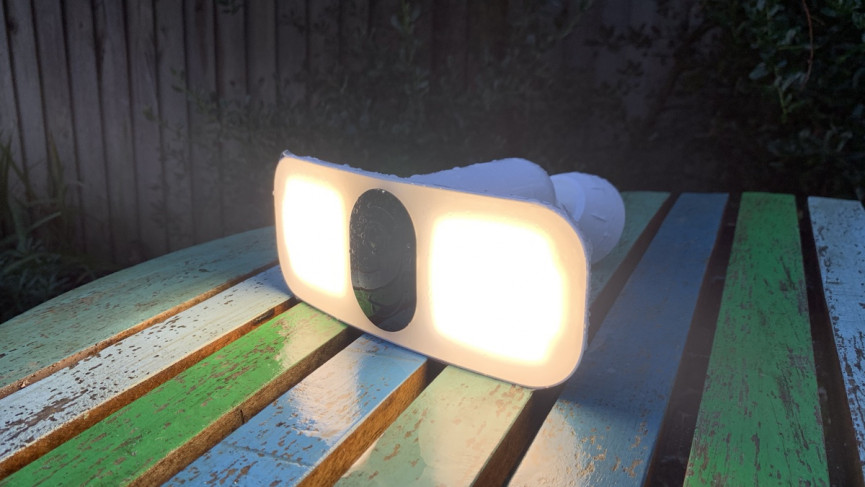
In terms of footage you get 2K QHD HDR with a resolution of 2560×1440. You can manually turn on 2K live streaming if you want it – otherwise this will be capped at 1080p.
The Arlo Pro 3 Floodlight has a FOV of 160 degrees, which means you’ll get decent coverage.
The Arlo Ultra did expand that to 180 degrees, but we actually turned our Floodlight down to 110 degree FOV. Arlo does a good job of “flattening” images so you don’t get a fish-eye effect, but the wide FOV isn’t necessary for every back yard.
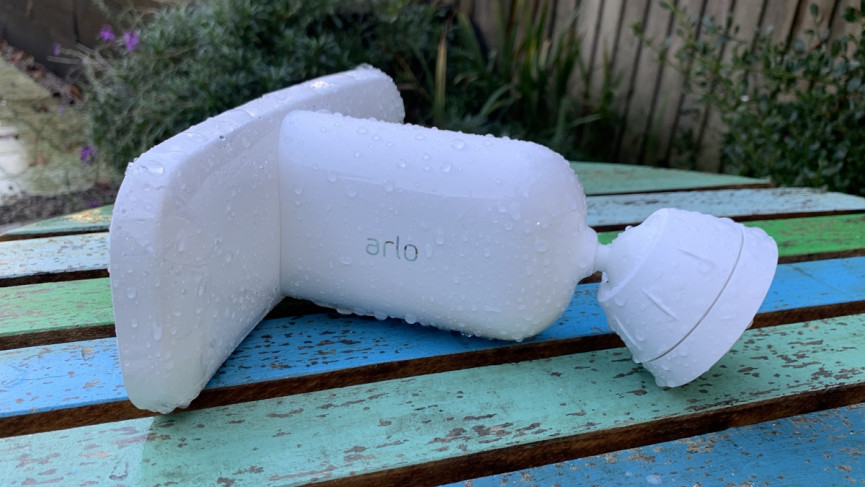
There’s two-way audio, thanks to a built-in speaker and mic, which is pretty responsive. You’ll have no problem having a short exchange.
There’s also a siren built in, which you can sound manually from the app. However, there’s not a feature where this will sound automatically.
Naturally, the camera and floodlight is motion detected, and you can tweak the sensitivity in the app.
You can also set action areas, color night vision (not so important with 3000 lumens to light things up).
Arlo Pro 3 Floodlight: Performance
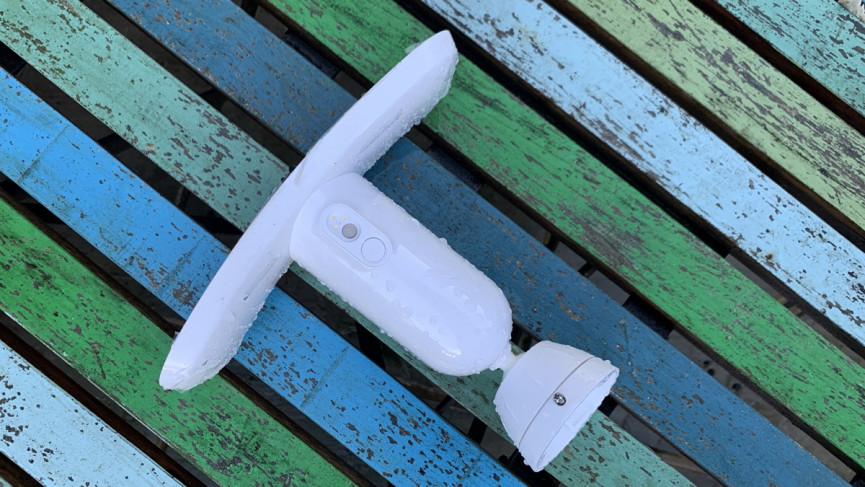
All current Arlo cameras, including the Pro 3, Ultra and Essential come with spotlights, so where does the Floodlight come in?
Well, the amount of light is the key. If you want to get decent coverage of a whole garden or space, a basic spotlight isn’t going to cut it.
You’ll be able to illuminate things up to about 40ft (very approximate as this isn’t quoted by Arlo), rather than around 15ft with a standard Spotlight.
What’s more, you’re more likely to get a better picture in adverse weather conditions.
As you can see below, the Floodlight douses our entire garden in light, compared to the Essential’s Spotlight, which barely makes the back fence width-ways.
In fact, we daren’t position the Floodlight any higher for fear of lighting up the back gardens of our neighbours.
Arlo Pro 3 Floodlight: Image quality and comparisons
It combines for much more reliable and better quality night-time footage, where the Pro 3 doesn’t have to rely on its small spotlight and night vision.
We found Pro 3 night time footage to be pretty grainy (see the third video), and the spotlight wasn’t able to really light up large open areas – so the Pro 3 Floodlight does a pretty good job.
And day time footage continues to be excellent as well. However, in the footage below, the sky is completely blown out and colors a little pale. But overall we’re happy with the image quality.
The below footage shows night-time footage on a pretty miserable night in South London. The light illuminates the whole garden, without blowing out elements in the foreground. The footage isn’t going to win any awards, but people/animals are easily visible and well-lit, even from longer range.
The below footage is from the standard Arlo Pro 3, so you can see the difference that 3000 lumens makes.
Yes it’s a different garden, but the spotlight vs floodlight is easy to compare. Sadly, the pandemic means we haven’t been able to get the Arlo Pro 3 Floodlight into our test garden yet – but it would make a brilliant addition.
Arlo Smart app
A big part of choosing a wireless security system is the cost of storing clips, which can add up to a significant annual outlay on top of the pricey tech.
Arlo used to offer a lot for free, but it’s become a pricey system that you’ll need to pay for to get any real benefit from.
You now need to pay £2.49 per month to essentially use Arlo Pro 3 where before that wasn’t necessary. It will cost £7.99 per month for five cameras.
That will get you 30 days of video storage, without it you’ll get none.
The subscription does give you more than just storage, however. There’s AI detection of people, vehicles, animals and even packages so you can filter out false positives. You may want to only get a push notification for people walking in front of your camera, for example, and this does make Arlo more useful.
If you use a base station you can get local recording, though that’s less relevant for the Pro 3 Floodlight which doesn’t include nor require one.
And this extra cost does make us a little less tolerant of the Arlo app’s shortcomings. Things have improved around multi-user logins and the speed of watching back recordings – but it’s no-where near as polished as the Nest app.




